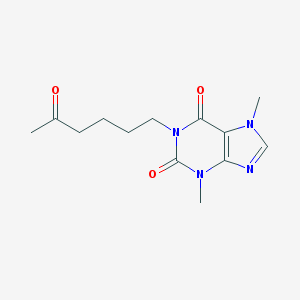-
Categories
-
Pharmaceutical Intermediates
-
Active Pharmaceutical Ingredients
-
Food Additives
- Industrial Coatings
- Agrochemicals
- Dyes and Pigments
- Surfactant
- Flavors and Fragrances
- Chemical Reagents
- Catalyst and Auxiliary
- Natural Products
- Inorganic Chemistry
-
Organic Chemistry
-
Biochemical Engineering
- Analytical Chemistry
-
Cosmetic Ingredient
- Water Treatment Chemical
-
Pharmaceutical Intermediates
Promotion
ECHEMI Mall
Wholesale
Weekly Price
Exhibition
News
-
Trade Service
BEIJING, Oct.
12, 2022 /PRNewswire/ -- At the end of 2020, AlphaFold, DeepMind's artificial intelligence (AI) system, made unprecedented progress
in predicting protein molecular structure.
This not only strongly promotes the development of the field of life sciences, but also proves that AI with the ability to master "dark knowledge" can help people directly skip the process of groping in the "unknown" and directly reach the other side
of "new knowledge".
Therefore, it is not difficult to understand why AI Drug Design, which has become increasingly mature and hot in recent years, has grown from embryonic to almost involved in the entire process
of drug research and development, from drug target discovery to clinical trials, in just a few years.
Especially in the face of target screening and compound discovery in new drug research and development, which have human cognitive blind spots, AIDD is significantly reducing the demand for expert knowledge and massive data, and is expected to change the dilemma of "nine deaths" in new drug research and development
.
In addition to the progress of AI technology itself, the rapid popularization of AIDD is also inseparable from the "born at the right time" - mature cloud computing technology is also just right to provide AIDD with the necessary digital infrastructure and capabilities, so that pharmaceutical companies can quickly break through digital bottlenecks such as storage, computing power, and machine learning models, so that AIDD can become an efficient normalization tool
。 For example, in the research and development of the new crown vaccine, Moderna completed the sequence of the mRNA COVID-19 vaccine in 2 days and released the first clinical batch
in 25 days through the machine learning capabilities built on the Amazon Web Services platform.
This indicates that drug research and development is fully entering the "AI era"
.
AIDD has accelerated drug discovery
New drug research and development has always been one of
the risky, complex, and time-consuming technical research areas in human scientific research.
According to the journal Nature, the overall cost of a new drug is about $2.
6 billion, takes about 10 years, and has a success rate of less than one-tenth
.
Since the mid-90s of the 20th century, Computer Aided Drug Design (CADD: Computer Aided Drug Design) has been used and gradually become the mainstream digital assistive technology
for pharmaceutical companies.
However, the ability of CAD is limited to the screening and optimization of existing knowledge and data, and its role is more of a "replacement" of human resources than a "breakthrough", so it cannot reach the cognitive blind spots
that human beings have not yet stepped into.
In contrast, AIDD can fully explore the unknown molecular structure space and generate new molecular compound structures beyond the existing experience and data, bringing a truly disruptive change
to drug discovery.
By embedding AI's machine learning, deep learning, image recognition, cognitive computing and other capabilities into all aspects of drug research and development, it can predict and identify more accurate disease targets, and conduct new drug molecular design, compound activity evaluation, toxicity evaluation and other research and development processes based on wet experiments and CAD simulation data, greatly reducing the dependence
on data volume and expert knowledge.
The most intuitive value of AIDD is also to significantly reduce the high capital and time costs of traditional drug research and development, bringing a huge leap
in research and development efficiency.
According to Exscientia Company Deck data, the use of AI technology can reduce the cost of new drug research and development by about 35%, and the research and development cycle has been shortened to 1-2 years
.
Cloud computing has made AIDD a normal tool
In 2021, Insilico, an Amazon Web Services customer and AI drug discovery company, announced that the world's first AI-discovered and designed drug candidate for the treatment of idiopathic pulmonary fibrosis has entered the clinical trial stage
.
From target discovery to compound validation, Insilico spent only $2.
6 million in less than 18 months, reducing the computational cost
of new drug development by approximately 99%.
Insilico's drug discovery engine is built on the Amazon Web Services platform and is at the heart of
the company's product portfolio.
The engine uses millions of data samples and multiple data types to discover disease biomarkers, identify the most promising targets, and design small molecule compounds
with specific properties.
Because Insilico's AI platform handles large amounts of experimental and textual data, the graphics processing unit (GPU) is highly
demanding.
Insilico's AI tools such as PandaOmics and Chemistry42 run on Amazon Elastic Compute Cloud (Amazon EC2) to obtain highly flexible and scalable cloud servers without maintaining large on-premises computing clusters
。 Insilico also uses Amazon Simple Storage Service (Amazon S3), an object storage service, to store relevant data, enabling its teams in six countries to easily access the data they need and collaborate
internationally.
Mature, easy-to-use, and "AI-friendly" cloud platforms create "shortcuts"
for industries to enter the AI era.
So far, more than 75% of artificial intelligence applications on the cloud are developed based on the Amazon Web Services platform, which has also enabled Amazon Web Services to accumulate rich artificial intelligence and machine learning technologies and successful experience
.
For the three digital foundations of computing power, algorithms, and data necessary for AID, as well as security compliance requirements, Amazon Web Services can provide perfect services and technical support:
- Without initial infrastructure investment, you can obtain the high-performance GPU/CPU computing power required by AIDD and pay as you go;
- Provides a large number of training inference and deployment tools, and supports a variety of deep learning frameworks
.
Institutions and personnel can quickly carry out R&D and testing without in-depth knowledge; - Amazon Web Services Marketplace offers hundreds of algorithms and models
.
Amazon's public data set also provides a variety of scientific data needed for drug development, such as ChEMBL, ZINC and Open Target
. - Amazon Web Services' cloud infrastructure has passed 98 global security compliance certifications, and has followed and supported more than 50 global life science compliance specifications, including GxP, HIPAA, HITRUST, and obtained Chinese certification under the Regulations on the Administration of Chinese Genetic Resources, enabling secure and worry-free data cooperation
between teams and institutions.
According to incomplete statistics, nearly 40 drug pipelines involving AI have entered the clinical stage
in the world.
With the wide application of AIDD, many enterprises at home and abroad have chosen Amazon Web Services as the cloud computing platform
for deploying AIDD.
Amazon Web Services can not only provide the cloud infrastructure required for AID, but also directly assist the development and use of AI tools, or use up to 92 Amazon Web Services life science public datasets to quickly enter model training
.
In recent years, based on Amazon Web Services, AstraZeneca has developed a pathological image recognition detection model driven by machine learning to replace the previous manual sample cataloging method during the development of
drug candidates.
With Amazon SageMaker Ground Truth, AstraZeneca can quickly annotate, collect, and classify training samples and form a dataset that can be used for model training in 50%
of the time it used to use.
In addition to saving time and labor costs, models trained with datasets help developers obtain more accurate analysis results
.
In the pilot conducted by both parties, AstraZeneca used 2,000 samples to analyze the key structures that cause diabetes damage with 95% accuracy, enabling scientists to quickly understand the safety and efficacy of the drug and accelerating the process of
new drug development and marketing.
Unleashing the greater potential of AIDD will enable drug development to fully enter the "AI era.
""
"Openness" is a key element in the development and application of
AI technology.
In order for AIDD to be more fully developed and explored in the future, it is necessary to get out of the silo
that only empowers a single enterprise.
Looking to the future, with the protection of data security and compliance sharing mechanism of public cloud, pharmaceutical companies will have the opportunity to achieve cross-enterprise data cooperation under the premise of ensuring core data security, and continuously improve the capabilities, application scope and influence
of AIDD with a more open ecosystem.
As early as 2019, Amazon Web Services and the world's top ten pharmaceutical companies jointly built a federated machine learning for drug discovery on Amazon Web Services MELLODDY, allowing pharmaceutical companies to carry out multi-party cooperation in a secure, compliant and data privacy environment to accelerate the scientific research and discovery process of the entire industry
。 AT PRESENT, THE MELLODDY PLATFORM RUNS ON THE AMAZON WEB SERVICES PLATFORM AT AN UNPRECEDENTED SCALE, USING FEDERATED LEARNING TO TRAIN MODELS ON BILLIONS OF EXPERIMENTAL DATA POINTS, AND ANALYZING MORE THAN 20 MILLION CHEMICAL MOLECULAR STRUCTURES AND PHYSICAL AND CHEMICAL PROPERTIES
.
MOREOVER, MELLODY ENABLES MACHINE LEARNING COLLABORATION TO TRAIN DRUG DISCOVERY MODELS WITHOUT THE NEED TO SHARE PROPRIETARY DATA AND MODELS
.
This project successfully demonstrates the viability
of pharmaceutical companies to collaborate through cloud computing to accelerate the discovery of new drugs.
Many companies in China's drug R&D field have begun to explore the commercial potential
behind AIDD while welcoming policy incentives.
In addition to the auxiliary preclinical trial stage, there are still more application potentials of AI technology that can be explored, such as the integration of AI with the Internet of Things, data lakehouse and other technologies, which can promote the whole process improvement
of drugs such as digital experiments, multi-center clinical, intelligent manufacturing and real-world analysis.
More and more enterprises have gradually begun the substantive application of AIDD, and promoted domestic drug research and development into a new "high-yield" stage
.
According to Data Bridge Market Research, the AI value of the drug discovery market in Asia Pacific will grow at a CAGR of 50.
9% between 2022 and 2029, and China is expected to become the dominant country
in this field.
As cloud computing continues to pave the way for AI applications such as AIDD, domestic pharmaceutical companies are expected to complete the R&D capacity leap, making the above predictions the final fact
.







